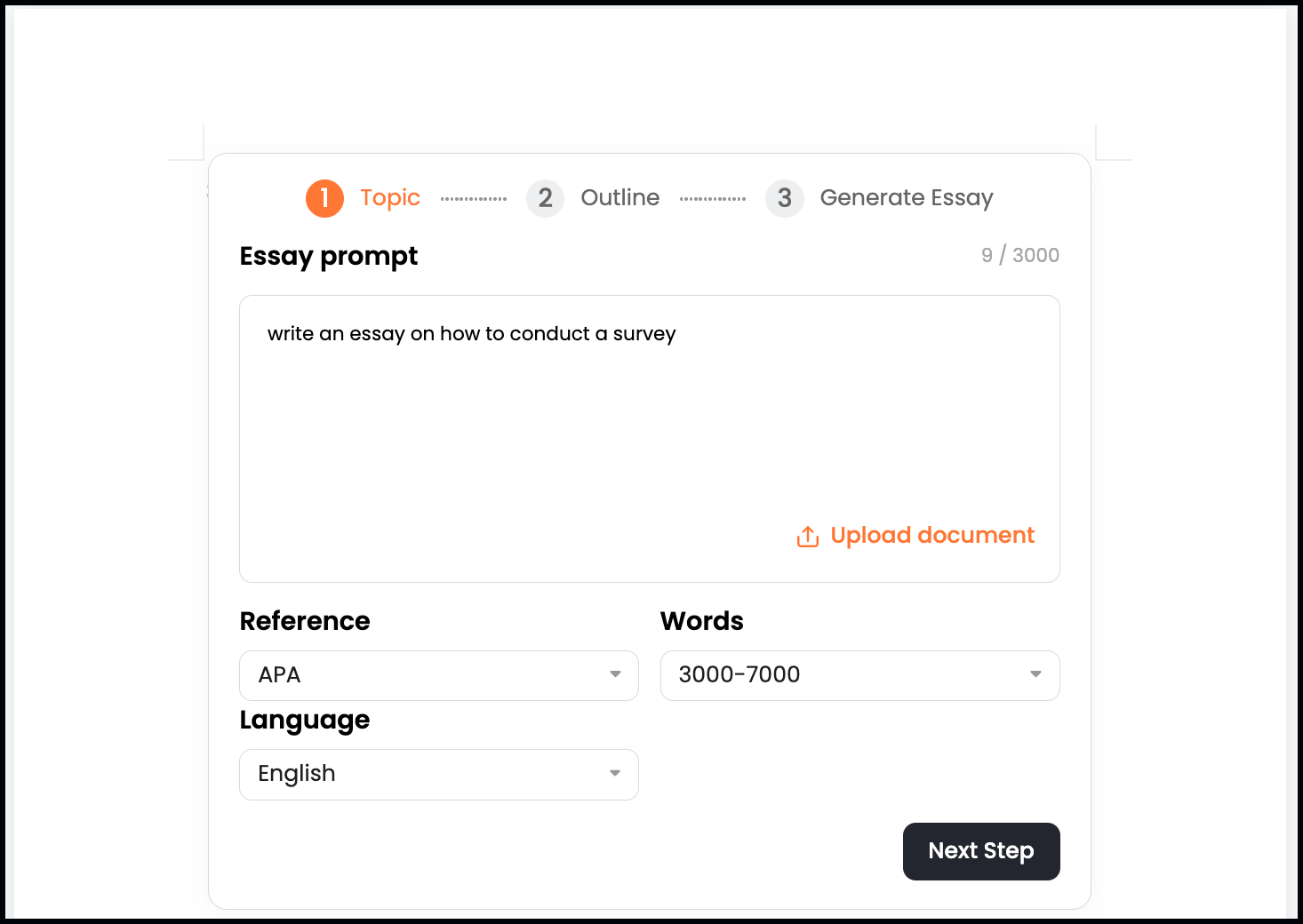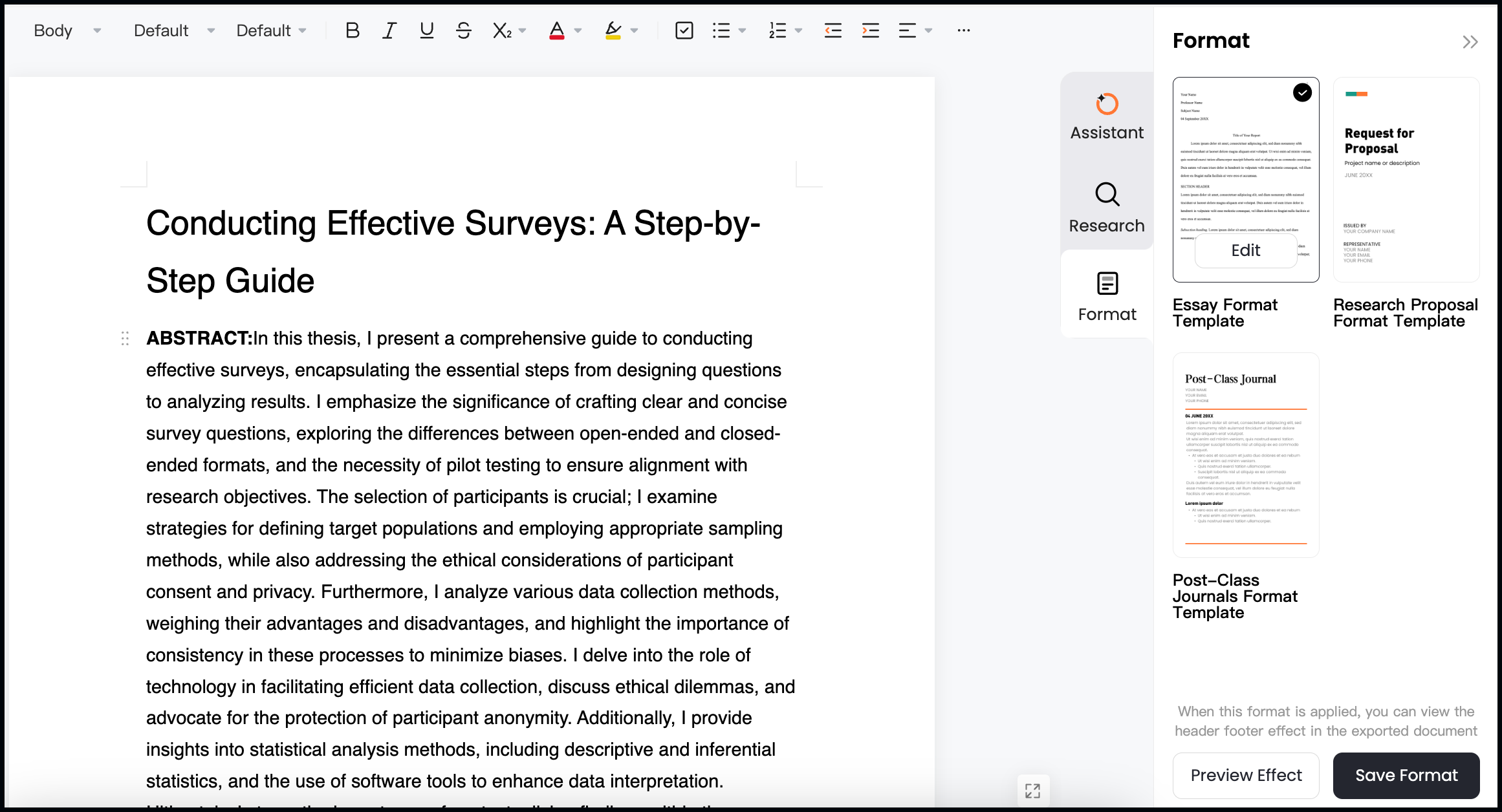Writing an essay in academics is absolutely a big deal for most students in college, as it gives them an opportunity to share their ambitions and thoughts on any topic.
When it comes to writing an essay, essay length plays a key role as it demonstrates that you have paid attention to the rules and instructions of essay writing.
Also, sticking to the right word limit helps you convey your points clearly and remain concise yet valuable without overwhelming or frustrating the reader.
But here, you might be wondering: “How long is an essay?” Or, “How many words should an essay be?” Well, no worries! Keep reading to get all your answers.
How Long Is an Essay?

Your academic essay’s length can vary depending on the subject of study and your level, specific course requirements, and departmental guidelines.
However, the essay is shorter than a thesis or research paper. Early-career scholars and researchers often face challenges in meeting essay-length requirements.
If you’re one of those with queries like “How long is a college essay,” see the following length guidelines for a complete overview of the essay word count limit according to your current level:
| Type of Essay | Word Count Range | Content of Essay |
| Graduate School Essay | 2500 to 6000 | In-depth research papers or longer essays |
| Graduate School Admission Essay | 500 to 1000 | A longer statement of purpose or personal statement |
| Undergraduate College Essay | 1500 to 5000 | Differ depending on institution |
| College Admission Essay | 200 to 650 | A short essay to convey your motivations and interests. |
| High School Essay | 300 to 1000 | A 5-paragraph essay |
Remember that the rules above are just average, and they can vary at educational institutions. Often, no exact page count or word count limit is fixed for academic papers and essays.
Therefore, it’s always better to ask about the word count for your essay from your instructor or someone professional from the institute you know.
How Many Words Should an Essay Be?
As we already mentioned, the right length of your essay depends on several aspects. There are various types of essays, each with its own distinct rules and word limits.
Let’s dig into the length requirements and preferences for various essay types:
● Narrative Essays
Narrative essays recount a personal experience or tell a story. These essays use descriptive language and chronological structure to captivate the readers.
Average Length → These essays normally range from 800 to 1500 words, mainly depending on the complexity of your story and the level of detail included.
● Descriptive Essays
This kind of essay aims to create a clear picture of a place, object, or person using descriptive language and sensory details.
Average Length → They tend to be relatively short compared to other types, with a word count of around 500 to 1000 words. This is because their focus is on making an image, not an argument.
● Expository Essays
Expository essays explain a concept or provide information using straightforward, clear language and a logical structure.
Average Length → These essays are between 1000 and 3000 words, which can vary based on the level of required details and the complexity of your topic.
● Argumentative Essays
These essays use logic, reasoning, and evidence, and also present a claim to convince the readers to accept the position of the writer on any controversial issue.
Average Length → As they’re normally longer, you’ll have to write in a range from 1500 to 4000 words to provide enough support and evidence for the argument.
● Compare and Contrast Essays
In general, compare and contrast essays evaluate the differences and similarities between different subjects using a block or point-to-point structure.
Average Length → The length of these essays is between 1000 and 3000 words based on the depth of comparison and number of subjects.
● Persuasive Essays
As the name suggests, persuasive essays convince the readers to take some action or adopt a specific viewpoint using logic, emotional appeals, or evidence.
Average Length → These essays are typically between 1000 and 3000 words, depending on the amount of evidence needed and the argument’s strength.
How Many Paragraphs Should a College Essay Have?

While the number of essay paragraphs can increase or decrease based on its complexity and length, a normal essay consists of a total of five paragraphs, which is standard
These include an introduction, three body paragraphs, and a final conclusion. Anyhow, this is not a fixed rule because much depends on the kind of essay and topic.
The main parts and paragraphs of the message are:
- Introduction: It usually has only one paragraph that introduces your topic to the readers. However, if you’re writing some sort of complex thesis or papers like dissertations, this section can also extend to 2 or 3 paragraphs.
- Body: This section is the most important one as you discuss the main details of your topic with details here. It requires mostly 1 to 4 paragraphs, but can also be increased if you’re writing a research paper.
- Conclusion: Just like the introduction, it usually has one paragraph, in which you have to summarize the key points of your essay and can also add a call to action to end it properly.
So yes, that’s all about how many paragraphs you may need for your college essay. Scroll down to explore more about the recommended length for every part of your essay!
Recommended Length for Each Part of a College Essay
While the recommended Length for a college essay for each part is not constant and may be influenced by the requirements of the application or assignment, you can follow a general guideline.
Here’s the breakdown of all three parts of an essay with their suggested or ideal length:
- Introduction: It should ideally contain 10 to 15% of the overall length of your essay. The introduction gives background information on a specific topic, builds a foundation with a context, and presents the main argument or thesis statement.
- Body Paragraphs: The body paragraphs account for nearly 60 to 70% of your essay’s length. Anyhow, every body paragraph is almost the same length. You can generally aim for a 150 to 200-word count per paragraph, and every single paragraph must focus on one point or idea.
- Conclusion: The length of the conclusion is similar to the introductory part — comprising 10 to 15% of the essay’s length. It must conclude or summarize the main points of the essay, establish the main argument or thesis, and offer a sense of resolution or closure.
Note that these are all typical recommendations, and the essay length of every paragraph can actually only be determined according to specific requirements given by your institute.
How to Count Your Essay Words?
Keeping track of your word count is important—no matter what topic you’re writing about. Most essays come with strict word limits, and staying within them helps you stay focused and meet assignment guidelines.
Thankfully, there are plenty of tools that make this task simple. Here’s how you can easily count words using the most common platforms:
1. Google Docs
One of the easiest and most widely used tools. To check your word count:
- On desktop: Go to the “Tools” menu and click “Word Count.” A pop-up will show the number of words, characters (with and without spaces), and even pages.
- On mobile: Tap the three-dot menu in the top right corner, then select “Word Count.”
- To check just a section of your text, simply highlight that part before opening the word count tool.
2. Microsoft Word
If you’re using Word (either online or desktop), the word count is usually visible at the bottom left of the window.
- If it’s not showing, right-click the status bar at the bottom and check “Word Count” to make it appear.
3. Google Sheets or Excel Users
These tools aren’t designed for word counts, but you can still get an accurate number:
- Just copy and paste your content into Google Docs or Microsoft Word to use their built-in counters.
4. Online Word Counter Tools
There are also many free online word count tools available. Just paste your text in, and they’ll instantly show the total number of words and characters.
How to Make an Essay Longer?

Writing assignments and essays usually have a specific minimum length. And obviously, it can be overwhelming when you constantly struggle to make your essays longer and more comprehensive.
Look at how you can add meaningful content and expand essays while making it more analytic, descriptive, and detailed:
● Expand Individual Paragraphs
Read through every sentence of your essay and notice if there’s any space to say more about any claims or statements you’ve made in the content.
You can also add some concrete evidence and examples where needed. Making a good argument is undoubtedly about supporting it with strong evidence.
Additionally, it’s a good idea to expand the conclusion and introduction if there is room for it. Ask yourself about any key examples or ideas and develop a comprehensive new picture.
● Write New Paragraphs
Another way to increase the length of an essay is to look for paragraphs that have more than one idea or debate. Usually, one paragraph with two or more ideas is underdeveloped.
Once you find those areas, break down every idea into separate paragraphs. If you find it a hard nut to crack to do this, you can also use Oreate AI for assistance in expanding.
What’s more, you can search for terms in your essay that are difficult and readers may not understand, and then write a separate paragraph to explain the definition of these terms.
How to Shorten Your Essay: Methods & Tools
If your essay is too long and you’re not sure what to cut—don’t worry. There are a few simple ways (and smart tools) to help you trim it down without losing meaning.
1. Cut Redundancy
- Look for repeated ideas or phrases and eliminate the extras.
- Example: “In my personal opinion” → “In my opinion.”
2. Combine Sentences
- Merge two short, related sentences into one for better flow and fewer words.
- Example: “She studied hard. She passed the exam.” → “She studied hard and passed the exam.”
3. Remove Unnecessary Prepositions
- Avoid phrases like “at this point in time” when “now” will do.
- Streamlining your phrasing keeps the text tight and clear.
4. Paraphrase with AI Tools
- Manually editing can take a lot of time—this is where AI can help.
-
Oreate AI paraphraser is especially effective for paraphrasing and shortening content while keeping your ideas intact.
- ✦ It removes fluff and improves clarity.
- ✦ It rewrites your essay with a better tone and style.
- ✦ It also helps eliminate unintentional plagiarism and suggests better structure.
Whether you prefer manual edits or smart AI tools, there are plenty of ways to shorten your essay—give them a try and see what fits.
How to Write a Long College Essay?
Writing a long college essay can be tough. To make the process easier, follow these simple steps with the help of smart tools like Oreate AI essay writer.
Step 1: Input Your Topic
Start by entering your essay topic into Oreate AI essay writer. You can also set the word count goal to match your assignment.
Step 2: Generate an Outline
Oreate AI will create a clear, organized outline that highlights the main points your essay should cover.
Step 3: Generate the Essay
Based on the outline, the tool quickly produces a full-length essay draft, complete with introductions, body paragraphs, citations and conclusions.
Step 4: Customize and Edit
AI writing can sometimes feel generic or robotic. To fix this, simply add your own voice and make edits where needed to make the essay truly yours.

How to Format a College Essay?
Once you’re done writing your essay, it is evident that a question will pop up in your mind: “How to format a college essay efficiently?” Follow these steps for proper formatting:
Step 1. Use a Standard Font
Initially, you can check that you’ve chosen a professional font for your essay, such as Georgia or Times New Roman. Just don’t add casual or unprofessional fonts like Comic Sans.
Step 2. Set the Right Font Size
Try to set up 11 or 12 font sizes, as they are considered ideal in the world of academia.
Step 3. Stick to Black Text
Although colorful fonts look attractive and creative, they can look unprofessional. So it’s better to keep it back and simple.
Step 4. Set Your Margins
Maintain 1-inch margins in your essay to ensure that all sides are equal, like left, right, top, and bottom.
Step 5. Double-Space the Essay
Always double-space your essay to improve readability. It also gives enough space for comments later if required.
Step 6. Indent New Paragraphs
Another important step is to indent the very first line of every paragraph by using the Tab key. You can also set it to 0.5 inches manually.
Step 7. Add Proper Citations
Make use of the most popular APA whenever you’re referencing sources.
Still confused about where to start? Oreate AI is here to help! It is a nice AI tool that is designed to help students (like you!) with long-form writing and rewriting, with many remarkable features.

Therefore, you can take its assistance when it comes to tasks like citation management, automatic plagiarism checking, essay creation, and more.
FAQs
Q1. Can I write an essay in a day?
Yes, it is possible to write the essay in one day, especially if it’s a short one. But remember that it demands a clear writing plan and extraordinary time management skills from your end. Scholars should always spare time for brainstorming, preparing the draft, revising, and editing.
Q2. Can I go under the suggested word limit of an essay?
Well, minor variations are always acceptable in everything. However, it is better to adhere to the word limit required by your institute. Writing under that specified limit may even result in a lack of details in your argument, somehow, and make readers feel that the essay writer has not addressed the topic.
Q3. Can I go over the suggested word limit of an essay?
Again, minor variations are acceptable in the word limit. If the instruction from your institute says “word up to,” it typically means you should not exceed that word count limit. This way, you can efficiently fulfill the criteria.



